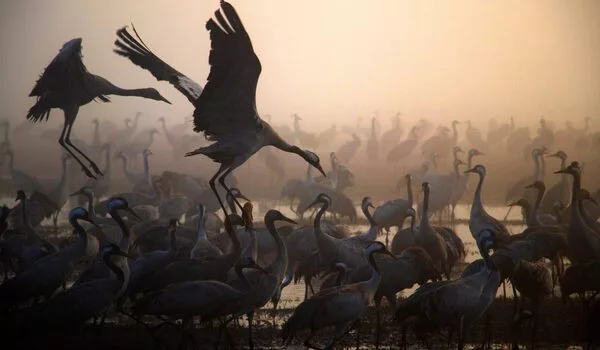Avian influenza is a disease that occurs in birds as a result of infection with avian (bird) influenza (flu) Type A viruses. Around the world, avian influenza A viruses have been isolated from over 100 different species of wild birds. These viruses are found in wild aquatic birds all over the world and can infect domestic poultry as well as other bird and animal species. Waterbirds (waterfowl) such as ducks, geese, swans, gulls, and terns, as well as shorebirds such as storks, plovers, and sandpipers, are examples of wild aquatic birds. Wild aquatic birds, particularly dabbling ducks, are thought to be avian influenza A virus reservoirs (hosts).
Wild aquatic birds can become infected with avian influenza A viruses in their intestines and respiratory tracts, but some species, such as ducks, may not become ill. However, avian influenza A viruses are highly contagious among birds, and some of these viruses can sicken and even kill certain domesticated bird species such as chickens, ducks, and turkeys.
Infected birds can shed avian influenza A viruses in their saliva, nasal secretions, and feces. Susceptible birds become infected when they come into contact with the virus, which is shed by infected birds. They can also become infected through contact with surfaces contaminated with virus from infected birds.
Avian flu is currently being monitored in the air at a number of poultry farms and live markets, where large outbreaks are expected. However, migratory birds infected with H5, H7, or H9 strains have been linked to many of the deadliest outbreaks.
Because of avian flu outbreaks on farms, finding a turkey this holiday season may be difficult. Migratory wild birds may have spread the virus to commercial flocks, but no one has looked closely at this roving population until now. Researchers report in the journal Environmental Science & Technology that cooler temperatures and certain species congregating in the same winter habitat may increase the circulation of H7 and H9 strains.
Avian flu is currently being monitored in the air at a number of poultry farms and live markets, where large outbreaks are expected. However, migratory birds infected with H5, H7, or H9 strains have been linked to many of the deadliest outbreaks. These wild birds live in spread-out populations where, even if there are infected individuals, the levels of viruses in the ambient air are quite low, making them hard to measure.

Previously, Pei-Shih Chen and colleagues determined how to measure low levels of airborne avian flu virus RNA in the environment. Using this method, Chen, Chen-Chih Chen and a new team wanted to collect first-of-its-kind information on virus strains that are likely to be circulating among migratory birds at a winter habitat and assess which factors could be influencing the transmission risks within the wild flock.
For two years, the researchers collected air samples near a large wetland in east Asia and filtered them through very fine membranes. Viral RNA was extracted from the filters, amplified, and analyzed by quantitative real-time polymerase chain reaction for influenza strains A, H5, H7, and H9. The results were then compared to weather data and the team’s log of bird species present during the migratory season.
Lower daily temperatures were linked to higher levels of influenza A, H7, and H9 in the air. Furthermore, the presence of certain migratory bird species, including those from the orders Anseriformes, Charadriiformes, and Pelecaniformes, was linked to periods of elevated H7 and H9 viral copies. The researchers claim that by demonstrating that ambient air sampling can detect airborne avian flu, they’ve identified potential factors that influence the strains of the disease that circulate in the winter among migratory birds.
















